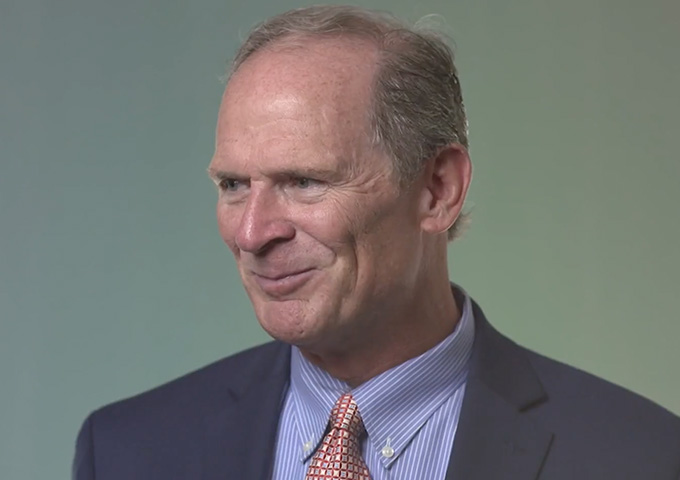Miracles and Faith that Shaped A Nation: Molly Pitcher
SHINING MOMENTS IN AMERICAN HISTORY
Susie Federer, William’s wife, put this book together from his daily radio program, American Minute. She explains, “Listening to Bill over the years has inspired me to share the miraculous stories in American history where God moved. I pray that we inspire miracles in your life.” He is going to be the one on the show and he wants to focus on the following three stories from the book:
MOLLY PITCHER
Molly Pitcher was known as one of the daughters of the American Revolution. She helped serve the weary army of George Washington at the Battle of Monmouth. She is generally believed to be Mary Ludwig Hays. When her husband enlisted, she became one of the “camp followers.” During the intense heat of the battles, these women would go from trench to trench, carrying pitchers of water to the parched soldiers. Women also carried a continuous supply of water to those loading the cannons. Water was needed to cool and clean the hot barrels of the cannons between shots, using a soaked end of a long ramrod. If this was not done, the cannons would soon overheat and become useless. At the Battle of Monmouth, June 28, 1778, Molly Pitcher was bringing water to soldiers, while her husband manned one of the cannons. When her husband collapsed from heat stroke, Mary took his place swabbing and loading the cannon for the rest of the battle. A British cannonball flew between her legs, tearing apart her skirt. Molly straightened up and uttered, “Well, that could have been worse,” and resumed loading the cannon. Hearing of her courage, General George Washington commended Mary Ludwig Hays, issuing her a warrant as a non-commissioned officer. She was known as “Sergeant Molly.” (Miracles in American History, 2019).
JOHN STEWART
John Stewart was a free man of color living in Virginia. Because of his parents' freedom, John was able to obtain a modest public education. His brother was a Baptist minister which might indicate that he received religious training at home. Stewart was a weak and sick child. This prevented him from accompanying his parents when they moved to Tennessee and he remained in Virginia until he was twenty-one. In 1811, his travels got him to Ohio before he was robbed of his life’s savings. In despair, he went on a drinking binge and contemplated suicide. Coming to his senses, he decided to turn to God and repair his life but occasionally fell back into sin. One such moment that caused him to rethink his sin was when his intimidate partner died. It caused him to think of the seriousness of his sin of excessive drinking and fornication. Eventually, he underwent a conversion in a Methodist church. He became a missionary to the Wyandotte Indians of Ohio and founder of what is often considered the first Methodist mission in America. William Walker, Sr., the Wyandots’ principal chief, had been able to secure land on the border between Missouri and Kansas. The Wyandot Indians brought to Christian faith by the black missionary John Stewart, emigrated west and founded the City of Wyandotte. The Christian Munsee tribe of Delaware "Lenape" Indians, who were pushed out of New York, New Jersey, and Pennsylvania, emigrated there. Wyandotte City was later renamed Kansas City.
EDDIE RICKENBACKER
Eddie Rickenbacker started as an auto racer and garnered international fame by competing in the Indianapolis 500 four times. He enlisted and eventually became the commanding officer of the 94th Aero Pursuit Squadron. After the war, he started an automobile company, the Rickenbacker Motor Company, which was responsible for the first four-wheel brake system.
In 1925, he supported General Billy Mitchell, who was court-martialed for criticizing the military’s failure to upgrade their airplanes. It was highly publicized and was made into a movie starring Gary Cooper.
In 1927, he became the owner of the Indy Speedway. He also worked or Eastern Airlines and eventually bought it.
He opposed President Roosevelt’s New Deal policies, fearing it would create a socialized welfare state which drew criticism from the liberal media.
In 1942, Secretary of War Henry L. Stimson asked Rickenbacker to go on a special mission to inspect military bases in the Pacific. The plane had an inadequate navigational system which resulted in them being 100 miles off course, running out of fuel, and landing in the ocean. For 24 days, he and seven others were stranded at sea. Rickenbacker was instrumental in encouraging the crew to fight to survive. As days turned into weeks, the men would read scriptures and they encountered miracles. In one such instance, they prayed for a seagull to land so they could catch him. A seagull landed on top of Rickenbacker’s head and he grabbed it. He used part of it as fish bait, and the group shared the rest. After saying the Lord’s prayer one day, they noticed the clouds began to darken, and rain began falling from the sky giving them the drinking water they so desperately needed to survive. All but one of the men survived and it changed all of their lives forever.
BILL’S FAITH
Bill was raised in a Christian home in St. Louis the fifth of eleven children. At 24, he began dating his future wife Susie and noticed that her mom watched The 700 Club. After accepting an invitation to attend a Christian men’s business meeting, he went forward because the other men had something that he wanted. He gave his life to Christ soon after. Once married and living in Texas, Bill was drawn into politics during Pat’s presidential run. A former youth pastor, Bill stayed interested in politics and was asked to run against Gephardt, which turned into one of the closest races in the nation.
Mentioned in the Video
Guest Info
Co-author w/wife Susie, latest, Miracles in American History: Amazing Faith that Shaped the Nation, Volume 2 (Susie adapted from his daily radio program, American Minute, self-published, 2019)
Founder, AmeriSearch, Inc. – a publishing company dedicated to the
historical research/preservation of America’s heritage; Host of TV show,
Faith in History
Rep. Congressional candidate against House Minority Leader Dick
Gephardt in 1998 & 2000 elections
Speaker before Congressmen, Senators, political conventions
Appeared on CSPAN, FOX, and O’Reilly Factor
Graduated from Saint Louis University with an Accounting/Business degree
Download
High Definition - MP4
High Quality - MP4
Low Bandwidth - MP4






